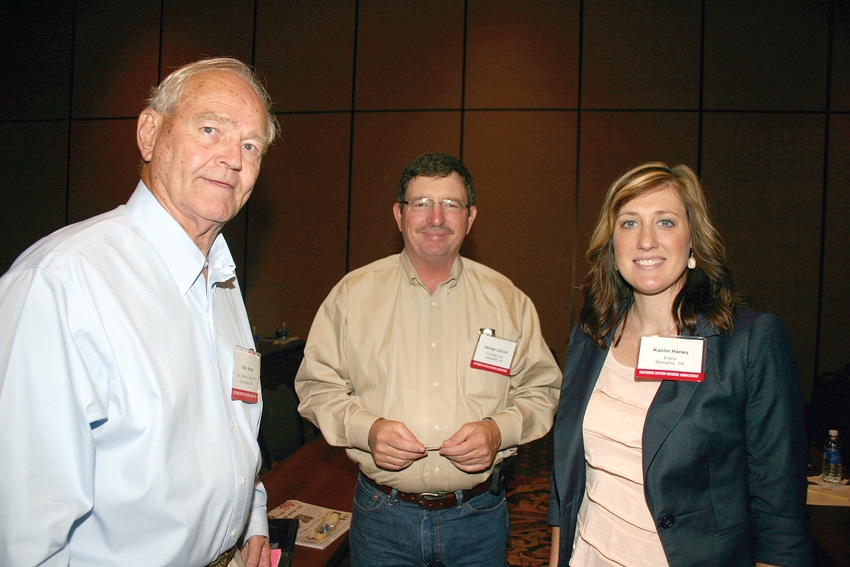
Drone use in U.S. agriculture is upon us. But there are still regulations to be passed and questions to be answered before the adoption of Unmanned Aerial Vehicles (UAVs) begins in earnest.
“UAVs have been used in Japan since 1990 for specific spot-spraying,” said Kaelin Hanks, Entira representative, at the Southern Cotton Ginners Association summer meeting in July 22. “We use them to send vaccines over to south Asia. They’re also used in South Africa to help stop the poaching of rhinos. Biologists also use them to monitor animals in their natural habitats.”
As an agricultural management consulting firm, Entira is very interested in the potential of UAVs. “We work with service providers, manufacturers, chemical companies, seed companies, producers and processors -- pretty much anyone in the agriculture industry.”
So what’s the future of UAVs?
The Association of Unmanned Vehicle Systems International (AUVSI) has predicted that in the United States the UAV industry “will have an economic impact of $13.6 billion and will create 70,000 new jobs by 2017. By 2025, they project the number of jobs reaching 100,000 with an $82 billion impact…
“AUVSI predicts that 80 percent of the UAV commercial market will be in the agriculture industry through precision agriculture. By 2015, they see about 40,000 units being sold. By 2025, that number jumps to about 160,000 units.”
The available two types of UAVs – fixed-wing and rotary-wing – “are both equipped with cameras and are guided by GPS. They can travel along a fixed flight path or be controlled remotely.
“The rotary-wing UAVs can stay in flight for a shorter period of time. They might be more conducive to a spot-specific area. The fixed-wing UAVs are for longer flights -- maybe to map entire fields.”
What are UAVs being used for today?
“Well, they’re being used by the military. They can be used by government (agencies) for fire and rescue. They can be used to search for someone who is lost.”
In agriculture, “they’ll be used for field scouting, mapping and (bulk-) or spot-spraying. A great example of what they can do is in the citrus industry which must fight a fungus that actually starts in the tree-tops and progresses down the tree. UAV use can really help the citrus grower by early detection of that fungus.”
Weed control/saving time
Hanks pointed to another example involving a 200-acre field of which a third is infested with herbicide-resistant weeds. “Today, most people would have to spray the whole 200 acres. With a UAV, however, the infested areas could be spot-sprayed.
“Think of the time saved by not having to walk the entire 200 acres. And by spot-spraying the reduction in input costs is huge. At the same time the environment benefits from fewer chemicals being sprayed and the potential for drift drops.”
Livestock owners, ranchers, can also benefit from UAVs. “They can use them to more easily monitor the health of their animals. Or, they can make sure all animals are accounted for.”
What about government regulations for UAVs?
“There are commercial and hobbyist regulations. Today, a commercial use is defined as anything that fits into business. There is currently no commercial use allowed.
“Hobbyist rules, meanwhile, require a UAV to be flown under 400 feet. They must be flown at least five miles from airports. The hobbyist must also maintain sight of the UAV.”
Congress has made the Federal Aviation Administration (FAA) the authority regulating UAVs and the agency “must come up with good guidelines. The FAA actually controls all of the U.S. air space. Obviously, safety is a main concern. We don’t want a UAV to run into airplanes. Privacy is also a big concern.”
The FAA has a deadline of September 2015 to come up with new regulations. Once that occurs, state-specific legislation will follow.
The agriculture industry must figure out how best to embrace this new technology. Hanks said some key questions must be addressed:
What data can a UAV come back with?
How quickly can that data be turned around and provide solutions for a farmer?
What equipment will be needed for the industry?
What training will be needed?
About the Author(s)
You May Also Like




